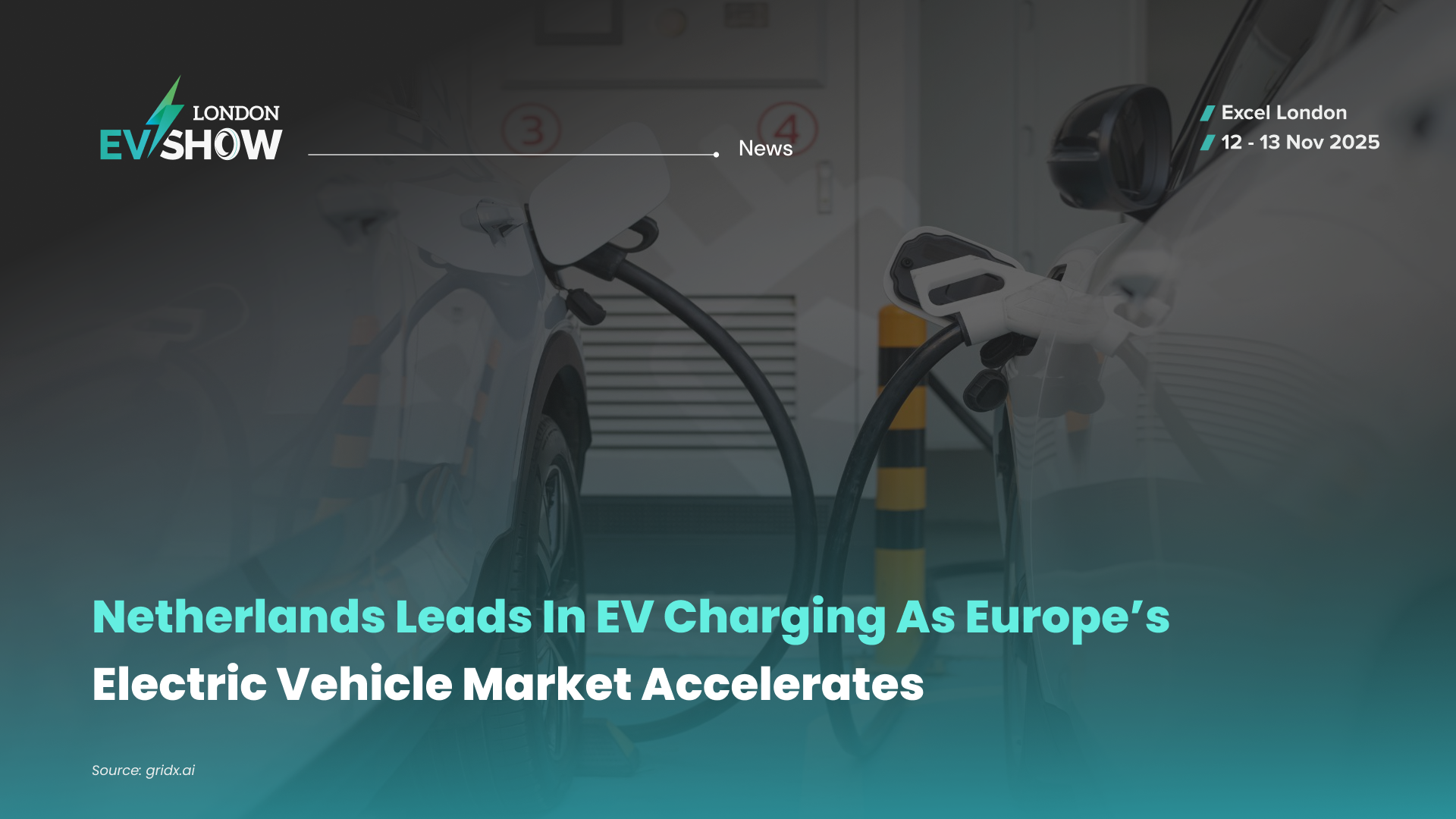UK, 14 April 2025: Europe’s electric vehicle revolution is accelerating, driven by a surge in battery electric vehicle (BEV) models and an increasing focus on fast and accessible charging solutions. The gridX released its highly anticipated EV Charging Report 2025, offering an in-depth analysis of the rapidly evolving charging infrastructure across the continent.
The Netherlands leads Europe in EV charging infrastructure, boasting the highest ratio of charge points at 10.04 per 1,000 inhabitants. It is followed by Belgium (6.54) and Iceland (6.48). In contrast, Germany, despite being one of the largest EV markets, lags behind with only 1.89 charge points per 1,000 inhabitants. The Netherlands also tops the ranking for charge point density along highways, with 66 chargers per kilometer, making it the most accessible country in Europe for EV charging, according to gridX’s latest analysis.
When it comes to EV charging infrastructure, the Netherlands continues to set the standard in Europe, with 183,000 units, ahead of Germany (159,958) and France (155,931). However, when it comes to total charging capacity, Germany takes the top spot with 6 gigawatts (GW). On a per capita basis, Norway ranks highest, offering an impressive 431 kilowatts (kW) of charging capacity per 1,000 inhabitants.
In 2024, Europe saw a remarkable 69% increase in BEV adoption, with the number of BEVs per 1,000 residents rising from 16.5 in 2023 to 17.8 in 2024. Norway continues to lead the charge, with an impressive 148 BEVs per 1,000 people, followed by Iceland (80) and Denmark (60). The Netherlands holds the sixth position, with 33 BEVs per 1,000 inhabitants, ahead of Germany, which has 24 BEVs per 1,000 residents.
The demand for fast EV charging is also accelerating across Europe. The share of chargers with capacities exceeding 150 kW increased from 7.2% in 2023 to 9.8% in 2024, reflecting a clear shift towards faster charging solutions. Norway remains the leader in ultra-fast charging infrastructure, with 27% of its chargers delivering more than 150 kW.
Countries like Finland, Estonia, and Liechtenstein closely follow, each having 20% of their chargers categorised as ultra-fast. In terms of growth, Malta saw a staggering 400% increase in DC chargers, followed by Lithuania (352%) and Greece (308%), marking rapid expansion in emerging EV markets.
The Netherlands has emerged as a shining example with its well-established and advanced public charging network, setting a benchmark for other countries aiming to facilitate the shift to electric mobility. The Netherlands’ leadership in EV charging infrastructure highlights the critical role of strategic planning and investment in driving widespread EV adoption. The findings from gridX’s report make one thing clear that building a resilient, forward-thinking charging network is essential for ensuring a sustainable and electrified future across Europe.

